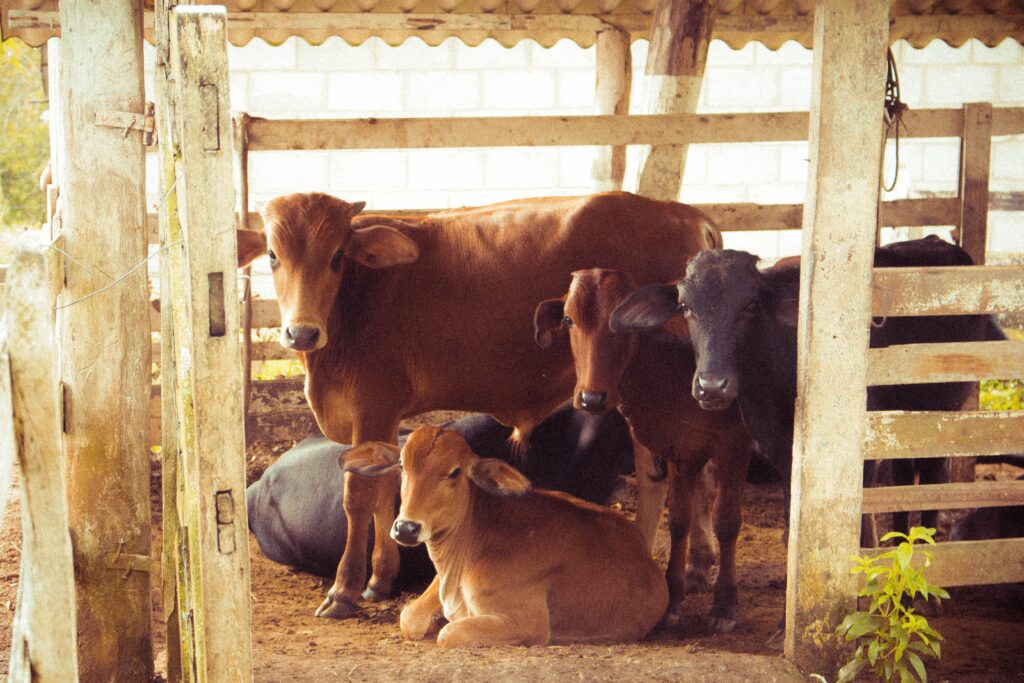Herd management is a critical aspect of modern dairy farming, and involves a range of practices aimed at maximising the productivity and health of a herd of dairy cows. Effective herd management requires a deep understanding of animal behaviour, nutrition, genetics, and disease prevention, and is essential for ensuring the long-term sustainability of a dairy operation.
There are many examples of successful herd management practices that have led to significant improvements in milk production, animal welfare, and overall profitability. For instance, some dairy farmers have implemented precision feeding programs that use computerised systems to monitor the nutritional needs of individual cows and adjust their diets accordingly. This can lead to better health outcomes and higher milk yields, as cows receive the right balance of nutrients to support their needs.
Other farmers have invested in innovative technologies such as automated milking systems that can significantly reduce labour costs and improve milk quality. These systems use sensors to monitor cow behaviour and health, and can detect issues such as mastitis early, allowing for prompt treatment and prevention of further spread of the disease.
Additionally, some dairy operations have implemented advanced genetic selection programs that focus on breeding cows with desirable traits such as high milk yield, strong immune systems, and docile temperaments. By selectively breeding the best cows, farmers can improve the overall productivity and health of their herds.
Overall, effective herd management is a crucial element of modern dairy farming, and the success stories of farmers who have implemented innovative practices provide inspiration for others in the industry to continue to seek out new ways to optimise their herds and improve the sustainability of their operations.
When we look at it closely, herd management is a complex branch with hordes of things to discuss about. We can give thought to fertility, breeding and reproduction under this. It also covers nutritions and milking techniques at some level. This can all day long if we dive deep down into the details. I would like to tell you about a few things that have caught my attention.
Precision feeding programs in the dairy sector are an innovative approach to animal nutrition that aim to improve the efficiency and sustainability of dairy farming. These programs involve the use of advanced technologies to monitor and manage the nutritional needs of individual cows and adjust their diets accordingly.
The goal of precision feeding is to optimise the balance between feed intake, milk production, and animal health, while minimising feed waste and environmental impact. By tailoring the diet of each cow to their specific needs, farmers can reduce feed costs, increase milk yields, and improve animal welfare.

Photo: Vinicius Pontes
Precision feeding programs typically use a combination of sensors, data analytics, and automation to monitor and control feed intake. These tools can include rumen sensors that measure the pH and temperature of the cow’s digestive system, milk sensors that analyse the composition of the milk, and activity monitors that track the cow’s movement and behaviour.
Precision feeding programs typically use a combination of sensors, data analytics, and automation to monitor and control feed intake.
Photo: Vinicius Pontes
Based on this data, computer algorithms can calculate the optimal feed ration for each cow, taking into account factors such as age, weight, milk production, and health status. Feed dispensers can then distribute the precise amount of feed to each cow at the right time, reducing waste and ensuring that each animal receives the nutrients they need.
Precision feeding programs have the potential to improve the profitability, efficiency, and sustainability of dairy farming by reducing feed costs, increasing milk yields, and minimising environmental impact. However, these programs require significant investment in technology and training, and may not be suitable for all types of dairy operations.
The other thing that caught my attention is the Automated milking system (AMS). Instead of traditional milking methods, which require manual labour and close supervision, AMS uses advanced technology to automatically milk cows without human intervention.
AMS typically involve a series of robotic milkers that are installed in a milking parlour or barn. The milking process is initiated when a cow enters the milking stall, and the system identifies the animal using a variety of sensors, such as a transponder on the cow’s collar.
The robot then cleans the cow’s udder and teats, and begins the milking process. AMS uses a variety of techniques to simulate the natural sucking action of a calf, including pulsation, vacuum, and massage. The milk is then transported via a series of pipes to a bulk tank, where it is stored until it can be collected and processed.
First, they can reduce the need for manual labour, as the milking process can be fully automated. This can lead to significant cost savings for farmers, who no longer need to pay for labour or spend time milking cows themselves.
In addition, AMS can increase the efficiency and productivity of a dairy operation. By milking cows more frequently, and at more regular intervals, AMS can increase milk production and improve the health of cows, as the milking process can be customised to meet the individual needs of each animal.
However, AMS also requires significant investment in technology and infrastructure, and may not be suitable for all types of dairy operations. They also require regular maintenance and calibration to ensure that they are functioning properly, and may not be as effective for cows with certain health issues, such as mastitis or other udder infections
Let me give you an example of a company that has a tremendous market presence and has successfully used herd management to optimal levels.
Amul has successfully implemented herd management practices to improve the productivity and health of its cows. With over 3.6 million members and 18,500 village-level milk collection centres across the country, Amul is the largest milk producer in India and the world’s largest cooperative.
One of the key ways in which Amul has implemented herd management practices is through its use of advanced breeding techniques. The company has established its own research and development centre, which works to develop new breeds of cows that are better suited to the Indian climate and are more resistant to diseases. By selectively breeding cows with desirable traits, such as high milk yield and strong immune systems, Amul has been able to improve the overall productivity and health of its herds.
In addition to breeding, Amul also uses precision feeding and health monitoring systems to optimise the nutrition and health of its cows. The company has developed a computerised system that tracks the nutritional requirements of individual cows and adjusts their diets accordingly, ensuring that they receive the right balance of nutrients to support their needs. This has led to improved milk yields and better overall health outcomes for the cows.
Amul has also invested in innovative technologies such as automated milking systems and cooling systems that help to improve milk quality and reduce labour costs. By using sensors to monitor cow behaviour and health, Amul can detect issues such as mastitis early, allowing for prompt treatment and prevention of further spread of the disease.
Amul’s success in the Indian dairy sector is a testament to the importance of effective herd management practices in modern dairy farming. By implementing innovative techniques to improve the health and productivity of its cows, Amul has been able to maintain its position.
as a leading producer of high-quality milk and dairy products in India and around the world.
Before parting with you dear reader, let me emphasise that effective herd management is essential for the success and sustainability of a dairy operation. By using advanced technologies and data-driven insights, farmers can optimise the health and productivity of their cows, reduce costs, and minimise environmental impact. By investing in herd management strategies that prioritise animal welfare and operational efficiency, dairy farmers can improve their bottom line while also meeting the demands of consumers for high-quality and sustainable dairy products.





















